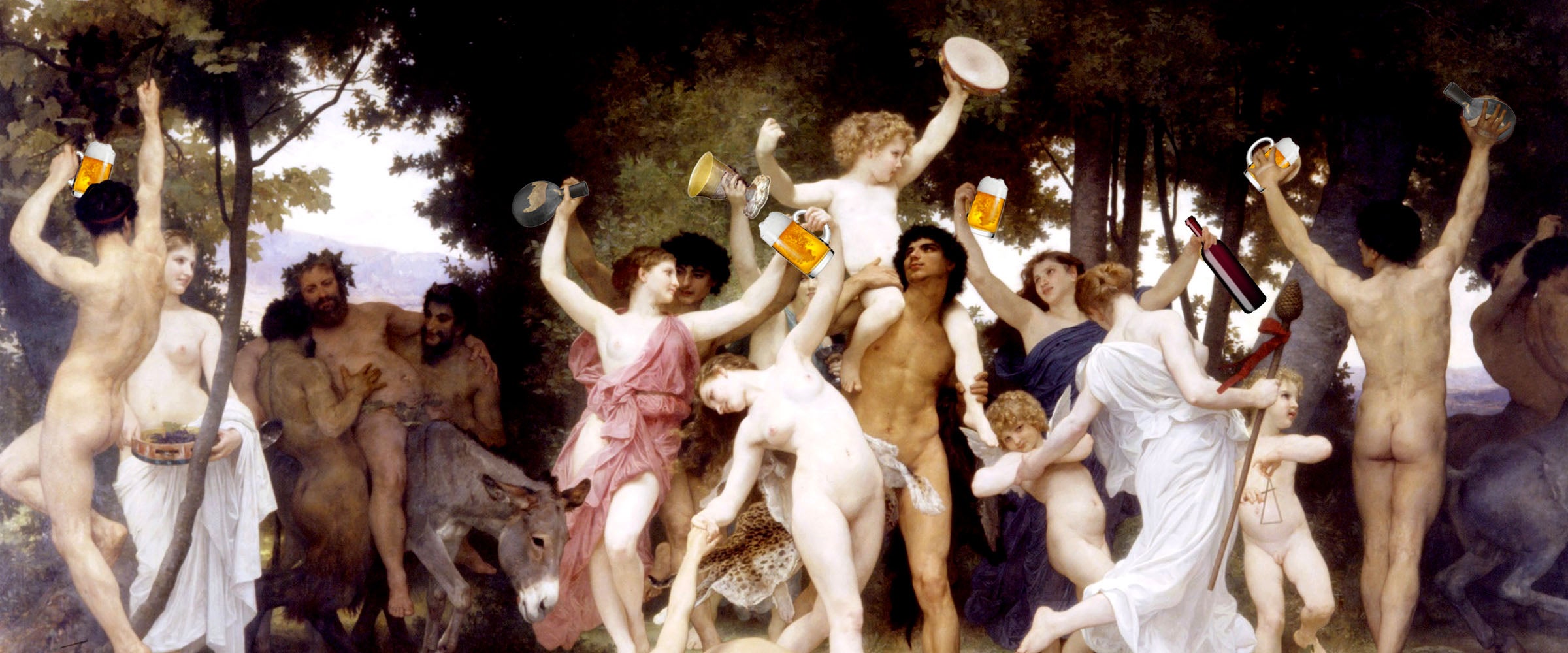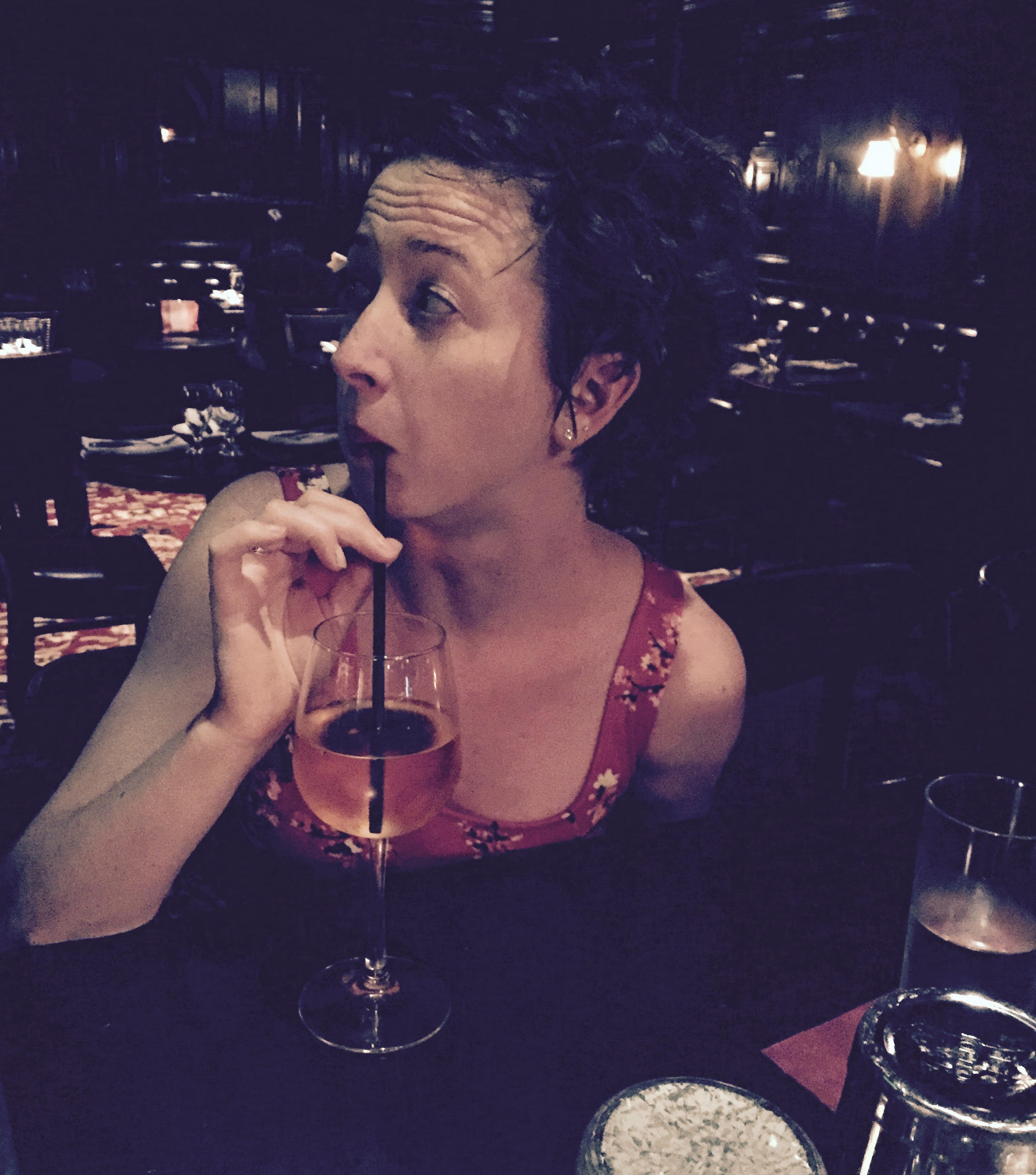Alcohol truly is a magical substance: It’s the only depressant that can act like a stimulant; it’s been revered since its conception as nectar of the gods; one of the oldest distilled spirits is eau de vie, which translates to water of life; and of course, hard alcohols are called spirits.
Booze was also originally the business of alchemists, the medieval potion masters thought to be practicing magic with their cordials and tonics. The history of offering alcohol as tribute to the gods spans from Druid ceremonies at Stonehenge to West African Vodun to modern-day witchcraft.
And while there’s plenty to be said about witches pouring libations and summoning the gods in the spirit of Halloween, when it comes to examining, appreciating, maybe even rediscovering the magic of alcohol, there really is no better time of year than now.
Before anyone was celebrating Christmas, Hanukkah or Kwanzaa, the Western world had Yule and Saturnalia; late-December holidays commemorating the winter solstice, when the days (finally) start to get longer. December 21st is the shortest day of the year, and the whole world agrees the beginning of the end of those long winter nights is worth celebrating.
How did people celebrate those original pagan holidays?
With booze — and lots of it.
Saturnalia, a weeklong celebration, was a time to invert social norms and let it all hang out, much like Mardi Gras. Yule, too, is celebrated with spirits, typically in the form of glögg, a hot mulled wine fortified with vodka, brandy or other alcohols.
And while that’s one method to get into the Christmas spirit, here are a few more ways to find the magic in your glass this holiday season.
Drinking With Intention
Odds are that if you drink, you drink with a purpose: to notice the effects of alcohol. This, for some of you, might be let’s get drunk and rage; for others it’s have a few beers with the boys and watch football; for others still, it’s something like today was awful — give me something to make me forget.
And while all of these reasons have merit (I’m the last one who’s going to judge why you hit the bottle, but please do so as responsibly as possible), they have a tendency to ignore what is so special about booze.
That’s drinking with intention.
Wait, you ask, aren’t drinking with purpose and drinking with intention the same thing?
Not quite.
From my perch behind the bar, the folks who drink with a purpose are focused on the end game, the desired level of intoxication, whatever that may be. People drinking with intention tend to take more time with a drink than their purpose-driven counterparts. This is the glass-of-wine-with-dinner crowd, or the woman sitting alone at the bar with a book and a bourbon. The entire ethos of drinking mezcal (my favorite spirit), for example, is built around drinking with intention: “Sip it, don’t shoot it,” instructs the label of every bottle of Del Maguey.
And it matters. Sipping instead of shooting says I’m here to appreciate this moment, which, really, is what the holidays are all about.
Consider Your Ritual (or Start a New One)
People’s tastes and habits go through phases and this couldn’t be more true when it comes to what they drink. I had the chance to go through heaps of old family photos recently, and when there wasn’t a date on the back of the picture you could ballpark it based on what my grandmother was drinking (pre-1970, vodka tonic; 1980–2010, white Zinfandel). I never drink red wine until about this time of year, when the weather gets cold; a lot of people switch from clear to brown spirits in the winter.
What you drink, in other words, is very intentional (and can say a lot about you; I always want to ask people who drink vodka-waters if everything’s okay at home).
I have two regulars who come in a few times a week, and the minute they walk through the door, I pull down two wine glasses and grab a bottle of Riesling and a bottle of Malbec. This is their thing: They have two or three glasses of wine after work and bitch about their days. It’s an important part of their week, their chance to blow off steam; it is, in other words, a ritual.
And to them it’s sacred.
When and where you drink are also things to consider: Do you have an after-work spot you always hit on your way home? Do you visit a bar on Tuesdays because your favorite bartender works that night? Do you have a first-date spot?
All of these things are, when you take the time to think about it, done for a very specific reason. It might be totally unconscious at this point, but next time you find yourself sitting at that one bar on your way home from work, think about why you’re there. Meditating, if you will, on your reasons for being in a place can make it that much more special.
Make (and Lift) Your Own Spirits
Spencre McGowan, founder of herbalist shop and blog Gingertooth and Twine and author of Blotto Botany: A Lesson in Healing Cordials and Plant Magic, uses alcohol for her business, personal consumption and her pagan-rooted witchcraft practice — all of which, she says, really overlap.
“Herbalism is a branch of plant magic that involves connecting with plants and herbs and harnessing their power in food or drink to manifest a desired outcome,” she explains.
Making and drinking booze in the form of cordials and infusions is a large part of the way McGowan connects with the world. “Cordials are such an ancient part of human history and culture,” she says. “It’s pure magic.”
McGowan makes, gifts and sells cordials (and teaches us how to make them ourselves) aimed at treating a number of physical and psychological ills. She says most people are looking for an aphrodisiac or for help with anxiety. But you don’t have to make or drink a cordial like it’s medicine.
“Alcohol is just so cool,” she says. “I love that it’s made from plants and it comes from the ground, and people have perfected it, and almost every culture uses alcohol in some form, and they have since forever.”
And making cordials is easy: Put things in a jar, cover it with your alcohol of choice, cap it tightly and let it sit.
The timing for how long to let your cordial cook, as it were, varies, but you can tell it’s getting close to done when it begins to thicken, as the sugars of your plants, herbs and/or fruits has been leached into the alcohol. You can also taste it from time to time.
“Ideally you just want to forget about and shake it whenever you see it,” she says.
When it’s done to your tastes, strain it, bottle it and drink it.
And if you like, drink it with intention.
“The winter solstice is a special time of year,” McGowan says.
“I’ll go out and drink under the moon and really meditate on the moon, with the intention of connecting with nature, of connecting with whatever it is you believe is out there,” she adds. “That makes me feel empowered and in touch with whatever greater meaning there is out there. That is magical.”
Talk With an Alchemist
I’ve been called a lot of different things at work, many of them four-letter words — some people really don’t like being cut off. One epithet that will always stick with me, though, came from a guy who’d had a few cocktails and, to be fair, was really into them. He looked at me over the rim of whatever new drink I had put in front of him and said, “You’re like a sexy booze magician.”
Now, the sexy part is up for debate, but the comparison to a magician holds some water.
In their book Basic Witches: How to Summon Success, Banish Drama, and Raise Hell With Your Coven, Jaya Saxena and Jess Zimmerman break the essence of performing magic into a process akin to cooking: You apply forces to change the nature of something, combining disparate raw ingredients to fashion something new.
When I’m working on a cocktail recipe, I am combining different flavors in various proportions to create something new and (I hope) delicious. When consumed, it should make the person drinking it feel a certain way.
Classic cocktails, the drink recipes that land in books and that people have been drinking for decades, are tried-and-true combinations that bartenders have put a lot of time and thought into perfecting, and they can be recreated by anyone with the raw materials and the recipe, which sounds a lot like a spell or potion from where I’m standing.
More importantly, though, cocktail bartenders are giant nerds who want to talk to you about drinks and drinking. When I’m at work, I have a wall of bottles behind me, each one containing something distinct and different that was designed to taste a certain way but also, based on its alcohol content, to pack a certain kind of buzz.
One of my favorite things about my job is talking with people about the bar’s inventory. See something you’ve never heard of? I’m taking that bottle off the shelf, showing you the label and pouring us both a taste so we can discuss it. Want to know what it’d be good with? I’ve probably got an idea or 12.
This is where the magic in my work lives and I’d like nothing more than to share it with you, maybe especially this time of year.
It’s a gift I know I can always give.

